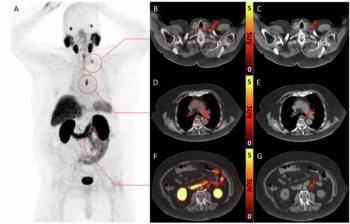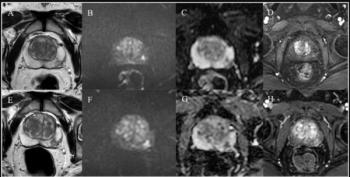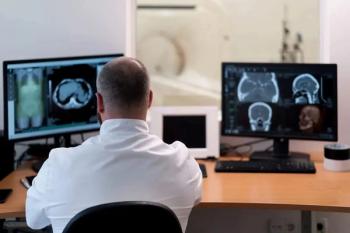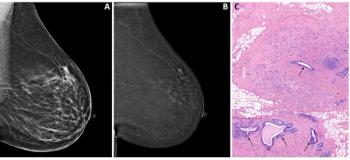An emerging deep learning model may bolster detection of cerebral aneurysms on computed tomography angiography (CTA) and significantly improve workflow efficiencies for these assessments.
For the multicenter study, recently published in Academic Radiology, researchers evaluated adjunctive use of a deep learning model in 484 patients (mean age of 62.26), including 234 patients with cerebral aneurysms. The study authors noted the deep learning model was trained with data from 3,829 patients drawn from 11 facilities. For testing of the DI model, there were 10 reviewing radiologists including four junior radiologists with less than eight years of experience and six senior radiologists with more than eight years of experience, according to the study.
Noting the time-consuming nature of assessing intracranial vessels on CTA for possible cerebral aneurysms, the researchers found that adjunctive use of the deep learning model facilitated a 37.2 percent reduction in interpretation time and led to a 90.8 percent reduction in post-processing time.
“ … The DL (deep learning) model in the present study significantly increased both the efficiency of post-processing and reporting by markedly decreasing post-processing time and enabling automated report generation. Thus, the integration of a DL model holds promise in alleviating the substantial workload encountered by radiologists in CTA diagnosis and reducing resource wastage and inefficiencies in workflow,” wrote lead study author Liyong Zhuo, M.D., who is affiliated with the Department of Radiology at the Affiliated Hospital of Hebei University in Baoding, China, and colleagues.
The study authors also noted the deep learning model improved the area under the curve (AUC) and sensitivity rates with junior radiologist assessments approaching the accuracy of senior radiologists for cerebral aneurysm detection.
For junior radiologists, the deep learning model elevated their AUC from 84.2 percent to 88.1 percent with senior radiologists seeing an increase from 85.3 percent to 89.5 percent. The researchers pointed out a 12.5 percent increase in per-lesion sensitivity (81.6 percent) for junior radiologists and an 11.1 percent increase for senior radiologists (83.5 percent).
“This finding further underscored the potential of using DL as a concurrent auxiliary reader to increase aneurysm detection and diagnostic efficiency, particularly for less experienced readers,” noted Zhuo and colleagues.
Three Key Takeaways
1. Increased efficiency in diagnosis. The adjunctive use of the deep learning (DL) model in detecting cerebral aneurysms on computed tomography angiography (CTA) significantly reduced interpretation time by 37.2 percent and post-processing time by 90.8 percent, improving the overall workflow for radiologists.
2. Enhanced diagnostic accuracy. The DL model improved diagnostic performance, especially for junior radiologists, bringing their accuracy closer to that of senior radiologists. Junior radiologists' AUC increased from 84.2 percent to 88.1 percent, while senior radiologists saw an increase from 85.3 percent to 89.5 percent. The model also improved sensitivity for detecting small cerebral aneurysms (>1 and >3 mm), mitigating the risk of misdiagnosis.
3. Potential to alleviate radiologist workload. By enabling faster processing and automated report generation, the DL model may help alleviate the significant workload faced by radiologists, particularly in diagnosing cerebral aneurysms via CTA. This could reduce resource wastage and workflow inefficiencies.
Adjunctive use of the deep learning model also led to a 15.8 percent increase in sensitivity rates (from 59.5 percent to 75.3 percent) for detecting small cerebral aneurysms >1 and >3 mm.
“This finding further corroborated prior evidence that using a DL model as a concurrent auxiliary reader might enhance the detection of small-sized aneurysms and consequently mitigate the risk of misdiagnosis and missed diagnosis,” added Zhuo and colleagues.
(Editor’s note: For related content, see “Image IQ Quiz: 35-Year-Old Patient with Painful Headache and Nausea,” “Can Radiomics Enhance Differentiation of Intracranial Aneurysms on Computed Tomography Angiography?” and “What New Research Reveals About Deep Learning and CT Angiography Detection of Cerebral Aneurysms.”)
In regard to study limitations, the authors acknowledged that CTA interpretation by three expert radiologists served as the study’s reference standard and noted that automated determination of aneurysm dimension with the AI model was not validated. The researchers also conceded the exclusion of patients with severe arteriovenous malformations and those with prior head and neck vascular stent placement.































